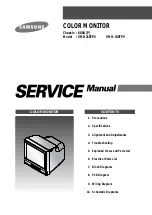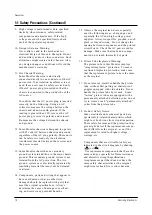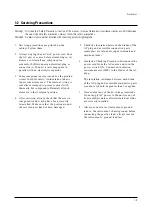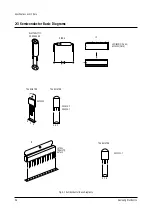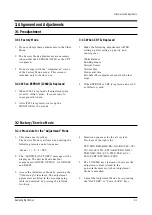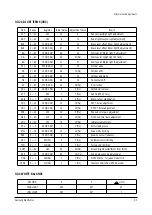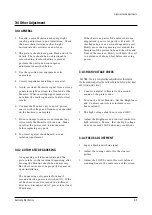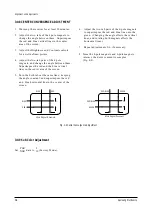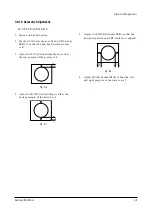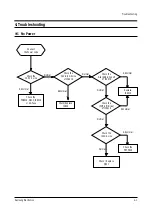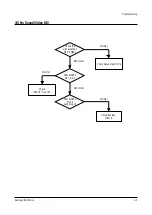
1. Some semiconductor (“solid state”) devices
are easily damaged by static electricity. Such
components are called Electrostatically
Sensitive Devices (ESDs); examples include
integrated circuits and some field-effect
transistors. The following techniques will
reduce the occurrence of component damage
caused by static electricity.
2. Immediately before handling any semicon
ductor components or assemblies, drain the
electrostatic charge from your body by
touching a known earth ground. Alternatively,
wear a discharging wrist-strap device. (Be
sure to remove it prior to applying power—
this is an electric shock precaution.)
3. After removing an ESD-equipped assembly,
place it on a conductive surface such as
aluminum foil to prevent accumulation of
electrostatic charge.
4. Do not use freon-propelled chemicals. These
can generate electrical charges that damage
ESDs.
5. Use only a grounded-tip soldering iron when
soldering or unsoldering ESDs.
6. Use only an anti-static solder removal device.
Many solder removal devices are not rated as
“anti-static”; these can accumulate sufficient
electrical charge to damage ESDs.
7. Do not remove a replacement ESD from its
protective package until you are ready to
install it. Most replacement ESDs are
packaged with leads that are electrically
shorted together by conductive foam,
aluminum foil or other conductive materials.
8. Immediately before removing the protective
material from the leads of a replacement ESD,
touch the protective material to the chassis or
circuit assembly into which the device will be
installed.
9. Minimize body motions when handling
unpackaged replacement ESDs. Motions such
as brushing clothes together, or lifting a foot
from a carpeted floor can generate enough
static electricity to damage an ESD.
Precautions
1-4
Samsung Electronics
1-3 Precautions for Electrostatically Sensitive Devices (ESDs)
CAUTION
These servicing instructions are for use by
qualified service personnel only.
To reduce the risk of electric shock do not
perform any servicing other than that contained
in the operating instructions unless you are
qualified to do so.
Summary of Contents for SM0-150TPV
Page 17: ...3 10 Samsung Electronics MEMO ...
Page 37: ...8 PCB Diagrams Samsung Electronics PCB Diagrams 8 1 8 1 PATTERN ...
Page 38: ...8 2 TOP PCB Diagrams 8 2 Samsung Electronics ...
Page 40: ...9 2 Samsung Electronics MEMO ...
Page 41: ...10 Schematic Diagrams Samsung Electronics Schematic Diagrams 9 1 10 1 MAIN 1 ...
Page 42: ...10 2 MAIN 2 Schematic Diagrams 9 2 Samsung Electronics ...
Page 43: ...10 3 MAIN3 Samsung Electronics Schematic Diagrams 9 3 ...
Page 44: ...10 4 MAIN 4 Schematic Diagrams 9 4 Samsung Electronics ...
Page 45: ...ELECTRONICS Samsung Electronics Co Ltd Dec 2002 Printed in Korea AA82 00253A ...

